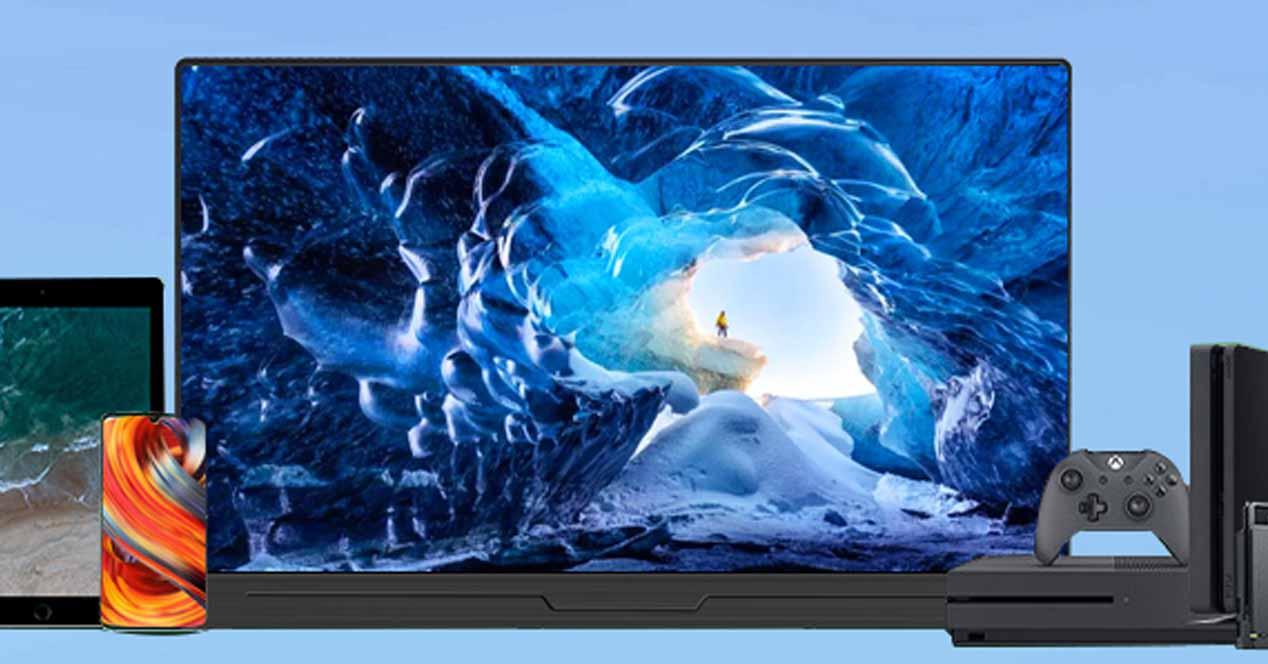In stores, we have a large number of monitors that use among their video inputs a USB type C port. The catch is that they use the high bandwidth of said peripheral interface to transmit video at high speed. With the additional advantage of this connector by having a parallel data channel of the USB 2.0 type and above all by the possibility of directly powering the device without additional power supply. However, we ran into a problem and that is that a good part of the graphics cards that are sold do not have such an output, limiting their use to laptops.
Why is USB-C barely used as a video output?
There is a technical reason behind all this and it has to do with the video signal used as the basis to send the video signal. What is done is to choose one or the other and a converter chip is usually chosen to transfer the signal to the other type. That is, from HDMI to DisplayPort or vice versa, but never vice versa. In laptops, since the connection of the screens of these is eDP, the DisplayPort is used with a converter to HDMI. On desktop it’s the opposite and incidentally we will take the opportunity to explain a technical curiosity, refresh rates and video broadcasting standards.
- HDMI exclusively supports multiple 60Hz refresh rates.
- DisplayPort has more versatility in this regard, also supporting multiple 72Hz and even 90Hz.
You will have noticed that many monitors with DisplayPort have much higher refresh rates on video inputs of this type than HDMI. Well, the thing is, if the GPU display controller is a DisplayPort type, it will be easy to place a USB-C as the video output. Therefore, they proliferate more than anything in laptops, since they are necessary for their integrated screen.
the real reason
Desktop graphics cards are powered by the PCI Express port itself and additional connectors, although a graphics card does not use all the power offered by the ports, the reality is that graphics card manufacturers prefer not having to power an external monitor via USB-C to give more power to the GPU and video memory and achieve better results in games compared to the competition.
That is, when you have two models that are exactly the same in terms of GPU and memory configuration. It’s the little things like better cooling and/or a higher clock speed, even a few tens of MHz, that make the difference between your model and the competition and it’s that and nothing else that affected adoption
A potential change for the future
If we take a laptop with a dedicated GPU, that is, it has a graphics chip and its VRAM on the board, we will see that although the CPU has integrated graphics inside, both components work in a switched way and this allows them to share the space of the screen controller, which means that we don’t have video outputs for the graphics card and for the motherboard, after all, in this type of computer, we only have one PCB.
Ideally, in tower computers, something similar would happen, that the graphics card would not have video outputs, but instead the signal would be passed through the PCI Express port to the motherboard, allowing for use the motherboard ports or add additional ports within the limit accepted by the GPU. We could even add one or more USB-C ports in video output to connect several screens of this type or one or more virtual reality viewers.
If you want to know why graphics cards might usefully adopt PCI Express 5.0 in the future, this is one of them. Excess bandwidth can be directed in this direction. This will give versatility in configurations and avoid so many unused duplicate ports. Also, when facing VR, we’d like to see a USB-C as the video output on the front of the tower and not the back, primarily for convenience.










